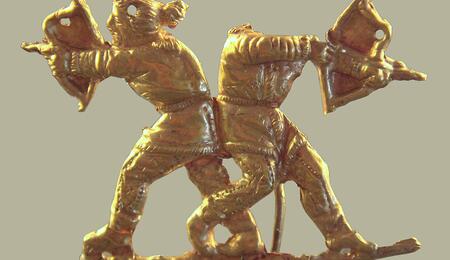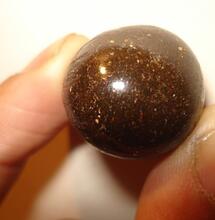The Ancient Civilization That Enjoyed 'Vapor Baths'

Cannabis history stretches back to the ancient days. Our scope of evidence of how various ancient civilizations embedded hemp and cannabis as part of their culture has significantly grown thanks to the advance in modern archeology. The Scythians for one inhaled smoke from smoldering cannabis seeds and flower to get high, according to the "father of history" Herodotus.
The Scythians were nomadic peoples who occupied lands from the Black Sea in Europe to the mountains of Central Asia sometime between the 6th century B.C. and the 4th century A.D.
They were also fearsome, with one of their most notorious fighting fractions being the Amazons, warrior women who were cunningly trained in horsemanship and archery since early childhood. The women received the same training as their male counterparts. Over the centuries, they've been shrouded in mystery and have inspired many myths and stories.
But perhaps the lesser-known fact about the Scythian women and men is that they inhaled smoke from smoldering cannabis plant material. We are informed of the Skythians' inhaling habits by none other than the "father of history" himself, the ancient Greek historian Herodotus.
Herodotus documented what he dubbed a Scythian "vapor bath." The Scythians reportedly built felt tipis, and inside they would put something like a small brazier and fill it with hot fuming rocks. Then they would throw "kannabis" before entering to inhale.
"These seeds smolder and smoke and send forth great clouds of stream. The Scythians howl with joy, awed, and elated by their vapor-bath," writes Herodotus.
The historian also gives an account of "intoxicating fruit" that the Scythians threw onto campfires when they were in larger groups. He wrote: "As it burns, the people inhale the fumes and become intoxicated, just as Greeks become inebriated with wine... They keep adding more to the fire and become even more intoxicated and dance and sing around the fire."
Archeological Evidence Backs Written Accounts
A written account is one thing, but when this is supported with genuine artifacts, that's a whole different level of evidence. A lot of historical scripts have appeared to contain fabrications or have provided false accounts of events. Fortunately, in the case of the Scythians, archeology backs the written reports from Herodotus.
Archeologists have so far excavated around 300 burial sites containing the bones of Scythian women (and men), who were often laid to rest along with their precious horses. Other items these fierce warriors were laid to rest with included jewelry and weapons, and in some cases—personal cannabis-burning kits.
Stanford University historian and writer Adrienne Mayor, an avid explorer and knowledgeable scholar of the ancient Scythian culture say that archeological findings confirmed equipment for felt tipis construction. On average, each tepee reached four feet in height. Archeological digs have also revealed intact braziers which contain cannabis residue and burnt seeds.
Cannabis-related artifacts linked to the Scythian culture have been excavated over a vast geographical realm that spans from Romania in Europe to as far east as China.
Inhaling and enjoying plant material from Cannabis sativa species was not the only "vice" of the Scythian civilization, however. These ancient nomadic peoples were also noted for their heavy drinking habits. They excessively drank wine, undiluted. The Greeks for instance mixed wine with water.
They were also keen on tattoos as evident from mummified remains of Scythians preserved in the Siberian permafrost. They were heavily tattooed with images of animals.
The Scythians inevitably played a part in ancient cannabis history. The most intriguing aspect of their story with cannabis is that "vapor baths" were collectively acceptable, were enjoyed by their entire society. Otherwise, they wouldn't have buried toolkits for cannabis use with them.
Had they lived in the 20th-century, they would have probably made the perfect stereotype material and even subject of interest to law enforcement. Heavy drinkers who sported scary tattoos, and doing drugs, too! That's bingo, my friend!










